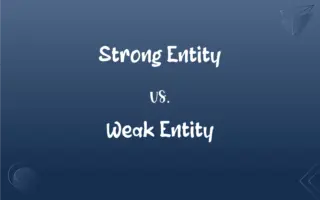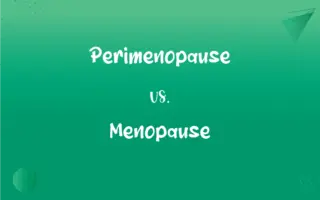Colorized vs. Colourized: What's the Difference?
Edited by Harlon Moss || By Janet White || Updated on October 6, 2023
"Colorized" and "Colourized" mean the same, referring to adding color to something, usually a black and white image or film. The difference lies in regional spelling: "Colorized" is American English, and "Colourized" is British English.

Key Differences
"Colorized" typically represents the American English spelling of the term. It primarily denotes the action or process of adding color to something, commonly in reference to black-and-white films or photographs to make them appear as though they were originally produced in color. The practice of colorization has been both praised for preserving and modernizing classic content and criticized for altering original artistic visions.
On the other hand, "Colourized" is the British English spelling of the same term and concept. Similarly, it is utilized to describe the process of artificially applying color to monochrome images. Despite the geographical spelling distinction, both words encapsulate identical meanings and applications. Historically, the technique was first applied to motion pictures but has since expanded to photographs and other media.
In an application context, “Colorized” may be used predominantly in the United States and other countries that utilize American English. The technology to perform colorization has evolved, with modern methods employing sophisticated software and artificial intelligence to achieve more accurate and realistic results. Such advancements allow for the revitalization of historical photos and film, providing contemporary audiences with relatable, colorful images.
Conversely, “Colourized” would be used in the United Kingdom and countries that follow British English conventions. The nuanced ‘u’ in the spelling does not alter the technique or technology used in the colorization process but adheres to linguistic norms. This distinction in spelling is consistent with other words differentiated by American and British English, such as “color/colour”, “favor/favour”, and “theater/theatre”.
Comparison Chart
Spelling
Uses "color" as the base word.
Uses "colour" as the base word.
ADVERTISEMENT
Usage Region
Predominantly used in American English.
Predominantly used in British English.
Example Usage
The studio colorized old black and white films.
The studio colourized old black and white films.
In Literature
More common in American publications.
More common in British publications.
Cultural Recognition
Recognized and accepted in American contexts.
Recognized and accepted in British contexts.
Colorized and Colourized Definitions
Colorized
Enhanced or altered the color of an image or video.
The studio colorized the classic black and white movie.
ADVERTISEMENT
Colourized
Applied colors to a previously monochromatic visual.
The colourized photographs brought history to life.
Colorized
Converted a monochrome image or film into color.
The colorized version of the photograph looks vibrant.
Colourized
Adjusted or changed the original colors in a visual.
The artist colourized the old photos to make them seem modern.
Colorized
To apply color to (black-and-white images) by digital means
A silent movie that was colorized before it was released on DVD.
Colourized
Simple past tense and past participle of colourize
Colorized
Simple past tense and past participle of colorize
FAQs
Is the process of colorization the same despite the spelling difference?
Yes, both "Colorized" and "Colourized" refer to the same process of adding color to monochromatic images or films.
What does "Colourized" mean?
"Colourized" has the same meaning as "Colorized" but is used in British English.
Why are there two different spellings?
The different spellings arise from variations in American and British English.
When was the first instance of colorization?
The first instances of film colorization date back to the early 1900s, initially done by hand.
When is "Colorized" used?
"Colorized" is used in American English and in countries using American English spelling conventions.
How is colorization done?
Colorization is often done using digital techniques, involving software that adds color to black-and-white visuals.
Can "Colourized" be used in academic writing in the USA?
It can be understood but "Colorized" is standard in American English academic writing.
What does "Colorized" mean?
"Colorized" refers to adding color to black-and-white photos or films, often through digital means.
When is "Colourized" used?
"Colourized" is used in British English and in regions using British English spelling norms.
Is colorization always related to visuals?
Predominantly yes, "Colorized" and "Colourized" are primarily used in the context of visuals like photos or films.
Can colorization be done to colored photos?
Yes, colorization can be used to alter or enhance already-colored photos or films.
Is colorization controversial?
It has been, due to concerns about altering original artistic creations.
How is colorization perceived in the film industry?
It has mixed perceptions: some appreciate its revitalizing old content, while purists may oppose altering original work.
Can colorization be done manually?
Historically, yes, but today it's predominantly done digitally for precision and efficiency.
What are the criticisms of colorization?
Critics argue it alters and potentially disrespects original artistic visions and historical accuracy.
Can I colorize my old family photos?
Absolutely, there are services and software available that can assist in colorizing old photos.
Which word is more universally accepted, "Colorized" or "Colourized"?
Both are accepted but in different regions: "Colorized" in the USA, and "Colourized" in the UK.
Can I use "Colorized" in British English?
It is recognized but "Colourized" is the standard and preferred usage in British English.
Why is colorization used?
Colorization is used to make old or monochromatic visuals more appealing or accessible to modern audiences.
Are there professional colorization services?
Yes, there are professionals and companies specializing in colorization services for visuals.
About Author
Written by
Janet WhiteJanet White has been an esteemed writer and blogger for Difference Wiki. Holding a Master's degree in Science and Medical Journalism from the prestigious Boston University, she has consistently demonstrated her expertise and passion for her field. When she's not immersed in her work, Janet relishes her time exercising, delving into a good book, and cherishing moments with friends and family.
Edited by
Harlon MossHarlon is a seasoned quality moderator and accomplished content writer for Difference Wiki. An alumnus of the prestigious University of California, he earned his degree in Computer Science. Leveraging his academic background, Harlon brings a meticulous and informed perspective to his work, ensuring content accuracy and excellence.

































































